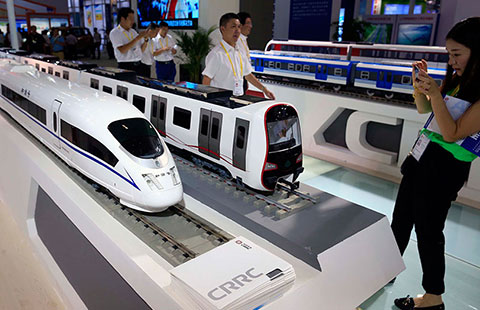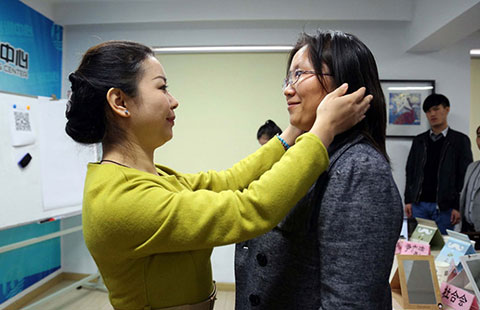CGN inks nuclear deal with Kenya
By Lyu Chang (China Daily) Updated: 2015-09-09 07:58China General Nuclear Power Group inked a framework agreement with Kenya on Monday to develop nuclear projects in the African nation, giving the much-needed fillip for export of its homegrown third-generation nuclear reactors.
Kenya plans to build four operational nuclear units by 2030, according to sources.
CGN, a leading nuclear firm, said on Monday in a statement that it plans to develop domestically designed nuclear reactors based on Hualong One technology to Kenya.
"The cooperation will also include nuclear research and development, construction, operation, fuel supply, nuclear safety and nuclear waste management and decommission," it said.
Kenya, Africa's ninth-largest economy with a population of 40 million, has been giving clear indications that it plans to use nuclear power to satiate its growing energy demand.
The current total installed energy capacity is about two gigawatts in Kenya, with only 10 percent of the rural population and 30 percent in urban areas getting access to power. Kenya plans to increase the capacity to about 17 gW by 2030, with nuclear power playing an important role in the country's overall energy mix.
Earlier reports had said that Kenya plans to build its first nuclear power plant by 2020 and have at least four such units by 2030. The country has also set up a nuclear electricity board under the Ministry of Energy and Petroleum.
"It is a golden opportunity, because it is just like China several decades ago. At that time China had no nuclear power generation and French nuclear companies came to China to help build the first nuclear power plant," a source close to the matter said.
"If it fructifies, it will be a huge project covering a wide spectrum of nuclear cooperation ranging from nuclear technology, construction, to nuclear talent training," the source said.
The agreement, which was signed in the Daya Bay nuclear power plant in Shenzhen, Guangdong province, reflects China's nuclear companies' determination to leverage its domestic experience to export nuclear technologies.
Industry officials said that about six to eight homegrown third-generation nuclear reactors are likely to be exported by 2020.
China, the world's largest energy consumer, has embarked on a huge nuclear program as part of its efforts to use more non-fossil fuels to reduce emissions amid mounting pressure caused by air pollution. There are 22 nuclear reactors in operation and 26 under construction in China, the largest number of nuclear power plants in the world, according to the National Energy Administration.
- Dalian's Puwan New Area breaking from outdated concepts
- Mutual growth with China our target, says Bosch’s top executive
- Over 450 enterprises to attend 15th Vietnam-China intl trade fair
- Oil demand to rise in China, says CTO of Saudi Aramco
- Dalian's Jinzhou streamlines business services
- China will see more open economy, convertible yuan
- Chinese shoemaker opens new plant in eastern Slovakia
- Dalian's Jinpu New District helps entrepreneurs realize dreams















